ESHG Young Investigator Awards
The ESHG awards prizes of EUR 500.- for outstanding research by young scientists presented as a spoken contribution at the conference. All young scientists submitting spoken presentations were encouraged to apply. The nominee is the first author (i.e. presenting author) of the presented abstract, pre- or post-doctoral (not more than 4 years after PhD/MD).
Awards are given in the following categories:
- ESHG Young Investigator Awards for Outstanding Science
- Isabelle Oberlé Award for Research on Genetics of Mental Retardation
- Lodewijk Sandkuijl Award for the best talk in Statistical Genetics
- Vienna Medical Academy Award for the best talk in Translational Medicine
- Mia Neri Award for the best talk in Cerebral Cancer Research
We have asked the candidates to answer the following questions:
Q1: Date and city of birth
Q2: What is your current position?
Q3: Why did you choose a career in genetics?
Q4: What is so interesting about the research you are presenting at ESHG 2016?
Candidates for Young Investigator Awards
Talk: C12.6 Genetic and functional comparison of identical germline and somatic SETBP1 mutations Session: Concurrent Sessions C12 Molecular Dysmorphology Q1: February 14th 1985. Buenos Aires, Argentina Q2: I am currently in the final year of my PhD at the Human Genetics department at Radboud University Medical Center in Nijmegen, the Netherlands. Q3: I became interested in genetics after reading the first paper using exome sequencing to accurately diagnose a patient suspected to have a renal salt-wasting disorder. Exome sequencing seemed like science fiction to me at the time! I later came in contact with researchers in Nijmegen who were using exome sequencing for disease-gene discovery and I was sold. Q4: I think it’s fascinating that, depending on timing, the same mutation can be involved in two phenotypes as different as SGS (a developmental disorder) and leukemia. This shows that the fields of cancer and developmental genetics can make use of each other to gain insight into their own subject, which for developmental disorders could potentially mean a better understanding of disease mechanisms and novel treatments for patients. | Raul Aguirre-Gamboa Talk: C04.3 Genetic variants regulate adaptive and innate immune cell levels in the healthy Dutch population Session: Concurrent Sessions C04 Complex Traits | |
Talk: C15.5 H-prune is required for microtubule assembly and is mutated in microcephaly and neurodevelopmental delay Session: Concurrent Sessions C15 Neurogenetic disorders Q1: 01/01/1985 Baghdad Q2: PhD student Q3: I have a longstanding passion in studying genetics because it is a fascinating field that looks deeply at the basic structure of living organisms and is intimately linked to explaining the fundamentals of evolution and underlying mechanisms in health and disease. Q4: My research highlights the discovery of the genetic mechanisms underlying a rare human developmental disorder. It sheds the light on a a novel previously undiscovered role of a gene linked to key cellular processes in early brain development. Mutations identified in this gene cause a severe human neurodevelopemental disease. |
Talk: C17.5 Mutations in TMEM126B cause a severe isolated complex I deficiency and variable clinical phenotype Session: Concurrent Sessions C17 Metabolic and mitochondrial disorders Q1: 25th March 1982, Glasgow UK Q2: Clinical Scientist and NIHR doctoral research fellow at the Wellcome Trust Centre for Mitochondrial Research in Newcastle upon Tyne, UK Q3: During my Undergraduate degree in Genetics I had the opportunity to secure a work experience post in the diagnostic genetics laboratory at my university. I've never looked back! The field has become truly pivotal in the diagnosis and treatment of so many aspects of human disease - I am proud to be part of it. Every day is different, and I love a challenge. Q4: I am presenting a series of cases who harbour mutations in a new disease gene, TMEM126B. It stems from my recent work to set up a targeted NGS service for paediatric mitochondrial disease. It showcases the translational research that is being undertaken in our laboratory, in this case in a multi centre, multi national collaboration. Please come along! | |
Simon Ardui Leuven, Belgium Talk: C07.6 Detection of AGG interruptions in FMR1 premutation females by single-molecule sequencing Session: Concurrent Sessions C07 Genome Technology in the Clinic |
Talk: PL2.3 Mutations in ACTRT1 and its transcribed non-coding elements lead to aberrant activation of the Hedgehog signaling pathway in inherited and sporadic basal cell carcinomas Session: Plenary Sessions PL2 What's New? Highlight Session Q1: 08 /21/1985 Melun, France Q2: I am Ph.D student at the IMAGINE Institute, Paris, France Q3: I have always been interested in the complexity of human genome. Genetics gives me the opportunity to understand how genetic variation can influence biological process and lead to disease. Q4: Our study identifies a novel mechanism accounting for hereditary and sporadic basal cell carcinomas and highlights the impact of intergenic mutations in human diseases. Moreover, elucidating the disease mechanism in an extremely rare inherited condition has shed light on the most common human cancer and identified a potential therapeutic target in oncology. | |
Talk: C16.1 FINEMAP: Ultrafast high-resolution fine-mapping using summary data from genome-wide association studies Session: Concurrent Sessions C16 Bioinformatics, statistical and population genetics Q1: April 10, 1982 in Leipzig/Germany Q2: PhD student Q3: I had to do an internship during undergraduate studies in statistics. I excluded many fields of study and genetics remained. I went for an internship, liked it and sticked with human genetics because its full of great problems that require skills in designing and implementing efficient statistical models and algorithms. Q4: FINEMAP's computational algorithm provides unprecedented efficiency for jointly analyzing the whole fine-mapping region and identifying more plausible variant combinations than standard step-wise conditioning. We believe that it is the tool to carry out future analyses to reveal valuable knowledge that could otherwise remain hidden due to limitations of existing methods. |
Talk: C12.2 Mutations in MYT1, encoding the myelin transcription factor 1, are a rare cause of Goldenhar syndrome within the RA signaling pathway Session: Concurrent Sessions C12 Molecular Dysmorphology Q1: 1988-03-05 Argenteuil (95)France Q2: I am a PhD student working in the laboratory “Rare Diseases: Genetics and Metabolism” (Inserm U1211) at University of Bordeaux (France). Q3: Understanding how works a cell or an organism and especially how they could modulate the genome expression has always fascinated me. This is why I have chosen to study Biology, especially Genetics. Moreover, today the progress of Science is so advanced that patients can expect to be cured. By working in Genetics, I may have the opportunity to contribute into this healing dream. Indeed, finding a gene implicated in a rare disorder is a first step to understand, improve life quality or even, cure the disease. By attempting to decipher the genetics basis of rare diseases, I may found a real source of motivation for my future career. Q4: The Goldenhar Syndrome, or Oculoauriculovertebral spectrum (OAVS) is one of the last rare developmental disease without, any major causative genes identified so far. Our laboratory has performed whole-exome-sequencing and molecular screening of the most important OAVS cohort to identify the first candidate gene involved in this developmental disorder. Functional studies on zebrafish and cell lines confirmed the implication of this gene in this spectrum. We also confirmed, with cellular studies, the close link between Goldenhar Syndrome and the Retinoic Acid signaling pathway. So, a new pathway could be investigated to better understand this syndrome. | |
Talk: C08.5 The « genotype-first » approach and international matchmaking: An efficient approach for disease-causing gene identification in undiagnosed disorders with developmental anomalies. Session: Concurrent Sessions C08 Sharing and Mining Omics Data Q1: 1989-06-29, Clermont-Ferrand, France Q2: PhD student, Team Genetics of development disorders (GAD) EA 4271, Dijon, France Q3: The interaction between molecular biology and medecine to characterize rare disease causing mutation is enriching, diverse, and contributes directly to help patients. Q4: Whole-exome sequencing has proven to be useful successful for the identification of the molecular basis of heterogeneous conditions such as intellectual disability with congenital anomalies. This study report on the first implication of MSL3 gene in a human disorder causing a new recognizable ultra-rare condition. |
London, United Kingdom Talk: C16.6 Genetic history of Latin America: Fine-scale population structure and phenotypic diversity Session: Concurrent Sessions C16 Bioinformatics, statistical and population genetics Q1: 02.03.1988 Rionegro-Antioquia-Colombia Q2: PhD student Q3: I had an innate fascination with science. I got interested on genetics for the first time when I was 9 years old while facing the loss of my eldest brother due to Cystic Fibrosis. This interest drove me to choose an undergrad in biology where I had the opportunity to work with the people who had directed population genetics' research on the region I come from in Northwestern Colombia, and have been working on the field since then (for almost 10 years). I always have found endless possibilities on genetics for contributing to the society, not only through research but also by exploring public policies and engagement. Q4: We had the opportunity to apply the cutting edge of haplotype-based approaches for inferring population structure, which gives increased resolution and precision, to the largest dataset to date for Latin American populations at the Genome-Wide level. Furthermore, we had the chance to explore geographic and phenotypic information, giving us a framework to establish a comprehensive landscape of the fine-scale genetic structure and its impact on phenotypic diversity. Understanding how the demographic history of recent admixed populations has shaped their genetic architecture provides a unique opportunity to explore several ideas around human evolution, with plausible applications to biomedical and forensic research. | |
Talk: C22.1 FOXF2, a novel risk locus for stroke and small artery disease: a genome-wide association study Session: Concurrent Sessions C22 Cardiovascular disorders Q1: 14th December 1982, Cuttack-INDIA Q2: Post-doctoral research fellow Q3: Genetics was a pleasant accident that I continue to love and cherish. Was always more inclined towards statistics and computer programming, but always loved Biology. Current high-throughput genetics has statistics and computer programming as an integral part. Thus genetics was a field where my skills matched my interest. Q4: For the first time a gene for small vessel disease stroke in the general population was identified. The genetic findings were validated in related disorders and animal models of mouse and zebrafish. This provides an opportunity for expanding upon the underling biology and potential treatment option for a disorder highly prevalent but poorly understood. |
Talk: C03.4 Tissue-specific mutation accumulation in human adult stem cells during life Session: Concurrent Sessions C03 Mutational Mechanisms Q1: 20-September-1986 Boskoop (NL) Q2: Postdoctoral researcher Q3: My affinity for biology and computational work brought me to the field of bioinformatics. Where I discovered that the field of genetics was undergoing rapid changes and was in need of informatics solutions. I was fortunate to find a position which offered me the possibility to use novel techniques and thereby impact healthcare through research. This led me to pursue a career in genetic on the interface between research and clinic. Q4: In our current research we, for the first time, catalogue genome-wide mutation accumulation in individual human adult stems cells, which allows us to identify mutational processes that are active in normal cells. By analysing different tissues at various ages, we were able to define tissue-specific contribution of these processes to age-related mutation accumulation and provide potential explanations for the extreme variation in cancer incidence among organs. | |
Talk: C16.3 PRSlice: A new polygenic risk score approach that leverages pleiotropy to improve prediction of complex traits Session: Concurrent Sessions C16 Bioinformatics, statistical and population genetics Q1: 16/07/91 Sheffield, U.K. Q2: PhD student Q3: I have always had a strong interest in research that has a tangible public health benefit. Understanding the genetic causes of disease is a fundamental component to developing preventative strategies, and this is what motivates me Q4: Research in the last few years is allowing us, for the first time ever, to make meaningful predictions on risk of comlex disease using genetic data. My research involves improving these predictive models; this will be a key part of diagnosis and public health in the coming decades |
Paris, France Talk: C18.3 Gillespie Syndrome: a unique gene, two modes of inheritance. Session: Concurrent Sessions C18 Eye Disorders Q1: 22/03/1977 Mar del Plata (Argentina) Q2: Postdoctoral researcher Q3: During my studies of biochemistry I was captivated by the contribution of genetics in health and disease. I am particularly interested in the identification of news genes in order to understand mechanisms underlying diseases. Q4: Gillespie syndrome (GS) is a rare variant form of aniridia characterized by nonprogressive cerebellar ataxia, intellectual disability, and iris hypoplasia. We demonstrate for the first time that homozygous and heterozygous ITPR1 loss-of-function mutations are the genetic defects underlying Gillespie syndrome. Our findings further extend the spectrum of ITPR1-related diseases. | |
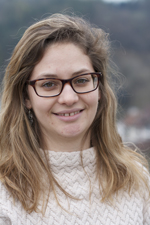 Anne-Maud Ferreira Talk: C23.4 Assessment of the GENCODE annotation through experimental validation Session: Concurrent Sessions C23 Functional Genomics
Q1: 25.04.1988 at Chambray-lès-Tours (France) Q2: I am a PhD student in the laboratory of Alexandre Reymond at the Center of Integrative Genomics University of Lausanne. Q3: As a bioinformatician, my role is to understand biological data by developing and applying computational methods and tools. Genomics is one of the fields where the need of having powerful tools to analyze the huge amount of data we are producing is vital. This application of complex computational methods to derive biological meaning from big data fascinates and motivates me. Q4: Almost everybody who is working in genomics relies in some ways on the genome annotation to analyze and interpret data. It is interesting to show how these annotations are generated and assessed especially for the GENCODE annotation that is widely used by the community. |  Martin Franke Talk: PL2.2 Formation and content of novel chromatin domains (neo-TADs) determine pathogenesis of genomic duplications Session: Plenary Sessions PL2 What's New? Highlight Session Q1: 11.07.1984 in Weimar, Germany Q2: PhD student at the Max Planck Institute for Molecular Genetics in Berlin Q3: I am trained as developmental biologist and I am fascinated of how life develops. The field of genetics holds the answers to how life works but also how genetic variations can challenge it. Besides understanding basic biological processes it is highly motivating for me to contribute to our knowledge of human diseases. Q4: Structural variations such as duplications are a common cause of congenital malformations or cancer but also contribute significantly to the variability of genomes. In our study we analyzed the effect of duplications at the SOX9 locus on 3D chromatin folding and gene regulation. We demonstrate how duplications change the 3D folding and we provide a framework that explains when duplications are pathogenic or non-pathogenic in humans. | |
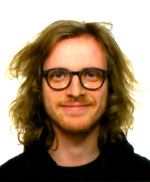 Marco Garieri Talk: C23.5 Single-cell RNA-seq analysis of human pancreatic islets Session: Concurrent Sessions C23 Functional Genomics Q1: 15.12.1988, Vicenza (Italy) Q2: PhD student at the Department of Genetic Medicine and Development, University of Geneva Q3: I am a mathematician and I decided to move into genetics, at first in pharma and now in academics, because I keen on having a real application of my theoretical knowledge. Among all possible fields, genetics allows me to have a useful purpose to make real changes in this world. Q4: Nowadays diabetes is one of the most common disease. We know that the islets of Langerhans are playing the major role, but we do not know yet how they are composed. Finally, thanks to the single cells RNA-seq, we are able to decipher the heterogeneity of the human pancreatic islets. |
Talk: PL2.6 Parent-of-origin specific signatures of de novo mutations Session: Plenary Sessions PL2 What's New? Highlight Session Q1: 28.02.1987, Hamburg Q2: I am PhD student in the Human Genetics Department of Nijmegen, the Netherlands. I work in the group of Christian Gilissen, co-supervised by Joris Veltman. Q3: I am still stunned that life can exist after all. When I learned about biology and how cells and organisms are supposed to function, the complexity of it all deeply impressed me. Usually, when I write computer code to make something work, in three lines I initially make two errors. Yet, human life seems to be very robust: most errors in the blueprint of life do not cause anything. Yet, as we geneticists know, this robustness is not perfect. A few critical components are important enough to significantly perturb health when damaged. Working in genetics to me is respecting the complexity and robustness of human life, and appreciating its residual fragility. Q4: De novo mutations are the main drivers of human genetic diversity. Everyone of us is carries a couple of dozen of these mutations, and few of us get terrible disease from them. We could disentangle de novo mutations on the paternal and maternal alleles and analyzed them in large numbers. The maternal and paternal de novo mutations could tell us about the surroundings in which they occur. This way, we can speculate about the mutational mechanisms. | |
| Anne Guimier Paris, France Talk: C17.4 Biallelic mutations of PPA2 (pyrophosphatase inorganic 2) in 2 families with recurrence of sudden unexpected infant death Session: Concurrent Sessions C17 Metabolic and mitochondrial disorders Q1: 25/06/1982, Paris Q2: PhD student, Institut Imagine, Paris Q3: MD specialized in Paediatrics, I m mostly interested in genetics of congenital malformations and I have found in Genetics, an enthusiastic and fascinating way to link medicine/clinical skill and research. Q4: Our study is about the identification of PPA2, a mitochondrial inorganic pyrophosphatase, as a novel cause of mitochondrial disorder associated with sudden cardiac arrest in infancy. |
Talk: C08.2 Identification of novel low frequency variants associated with susceptibility with a variety of cancers through the re-analysis of publicly available genome-wide association studies Session: Concurrent Sessions C08 Sharing and Mining Omics Data Q1: 25 August 1988, Barcelona. Q2: I am a second year PhD student at the Computational Genomics group at Barcelona Supercomputing Center (BSC-CNS). Q3: I am interested in how genetic variants determine the risk for complex disorders (e.g. cancer). Using supercomputing resources and new analytical techniques, we can now analyse the genetic landscape of common diseases extensively. Contributing to the understanding of the genetics behind complex diseases can boost its prevention, diagnosis and treatment. Q4: We found novel low frequency variants associated with different cancers through the re-analysis of publicly available GWAS data, imputing genotypes using new sequence-based reference panels. This highlights the importance of data sharing initiatives that gives the opportunity to develop and apply different analytic approaches to all investigators. | |
Helsinki, Finland Talk: C04.6 StatinGWAS: A genome-wide association study demonstrating the research potential of nationwide prescription drug registries Session: Concurrent Sessions C04 Complex Traits Q1: 29.03.1990 Espoo, Finland Q2: I am a predoc in Samuli Ripatti's lab at the Institute for Molecular Medicine Finland. My research focuses on improving our understanding on complex diseases, such as cardiovascular disease, exploiting epidemiological study cohorts and the national prescription drug registry in Finland. Q3: I truly enjoy the multidisciplinarity of genetics. Solving non-trivial problems in life sciences by translating ideas to maths and then implementing them in code makes me very excited. Exchanging ideas with experts in their respective fields makes genetics just that much more rewarding. Q4: National prescription drug registries are a way to cost-effectively collect proxy phenotypes for large populations. While hospitalization records may provide complete ascertainment of serious diseases, prescription registries may provide insights into the onset and severity of chronic disease, as well as the genetic variants with pharmacogenetic effects. |
Talk: C05.5 Parent inheritance of RB1 hypomorphic mutations and somatic mosaicism can explain low penetrance in retinoblastoma. Session: Concurrent Sessions C05 Cancer Predisposition Q1: March 22,1988 Castellammare di Stabia (Napoli) Q2: PhD student Q3: I have loved biological sciences since I was young, but my career in genetics began by chance. Now I love this specific field expecially applied to human health. Q4: this study focuses on understanding the basis of low penetrance in RB, a long debated issue in genetics. we demostrated that mosaicism and parental origin represent key factors. | |
Talk: C18.6 Molecular inversion probe based sequence analysis of 108 genes associated with non-syndromic inherited retinal disease in 4,000 probands Session: Concurrent Sessions C18 Eye Disorders Q1: 20 April 1982, Karachi Q2: Postdoctoral researcher Q3: Pakistan has the highest number of non-curable autosomal recessive diseases. To pave the way towards therapy for inherited retinal diseases (IRD), I wished to contribute towards identifying the genetic defects and understanding of the pathogenic mechanisms. Q4: My project represents the largest IRD genotyping effort ever, as we estimate to provide a genetic diagnosis for about 2,400 individuals. |
Talk: C04.5 Variants from the exome chip and metabolic pathways of type 2 diabetes Session: Concurrent Sessions C04 Complex Traits Q1: 22.03.1989 in Erfurt, Germany Q2: PhD student Q3: During my studies in nutritional science, I visited first lectures on basic genetics and became interested in this field of research. Later on, I specialized in epidemiology and finally, decided to combine both fields within my PhD. Q4: In systems epidemiology traditional epidemiologic methods are combined with modern high-throughput technologies. In my project I associated genetic data with diabetes-related metabolite traits, to further elucidate metabolic pathways of type 2 diabetes and to possibly identify novel genetic risk variants for type 2 diabetes in humans. | |
Talk: C02.6 De novo germline mutations in exon 5 of PPM1D cause intellectual disability. Session: Concurrent Sessions C02 Intellectual Disability Q1: 5th January 1980,Zutphen Q2: PhD student, clinical geneticist in training. Q3: Initially, I have chosen clinical genetics because looking at (facial) features tells us which genetic defect is (probably) causal for the phenotype. However, my research now focuses on reverse phenotyping which, in combination with functional studies, is a very helpful tool for interpretation of novel variances in a specific gene. Q4: We show that de novo germline mutations in exon 5 of PPM1D cause syndromic ID by presenting several interesting cases and additional functional studies. |
Talk: C04.1 More than 1500 genetic variants regulate haematopoiesis in humans revealing novel genes and pathways Session: Concurrent Sessions C04 Complex Traits Q1: 3rd January 1989 Beijing Q2: Research Associate Q3: I have always been interested in big data; it poses a unique set of limitations and complexities. Genetics research was of particular interest to me because of Mendelian randomisation which I find to be a very powerful tool. Q4: We describe a large-scale genome-wide association study testing associations of 29.5 million human genetic variants with 36 blood cell parameters in 173,480 European-ancestry participants. This is one of the largest GWAS studies ever performed and we identify 1,652 associations, increasing the total number of known variants by more than 10-fold. | |
Talk: C15.6 Primary microcephaly: ALFY-controlled DVL3 autophagy regulates Wnt signaling, determining human brain size Session: Concurrent Sessions C15 Neurogenetic disorders Q1: 20/5/1981, Rehovot Q2: PhD student final year Q3: The field of genetics has an immediate effect on people's lives. It allows us to rapidly integrate basic science with practical medical needs and provide suffering families with a long expected solution for their problem. Moreover it enables insights into proper human brain development and the processes that govern it. Q4: We show a novel molecular pathway determining human brain size: human primary microcephaly is caused by a mutation in ALFY, autophagy linked scaffold protein. We demonstrate that ALFY normally controls the removal of DVL3 aggregates, and through this regulates Wnt signaling, a major molecular pathway in embryogenesis. |
Talk: C14.6 Tracing the origin of disseminated tumor cells in breast cancer using single-?cell sequencing Session: Concurrent Sessions C14 Cancer Genetics: From modeling to profiling Q1: 24/12/1986, New Delhi Q2: PhD Student Q3: Cancer is a deadly disease, killing more than 10 million individuals every year. It spreads from primary site to the distant organs but the spread of the disease and the underlying mechanism is still unknown. To understand the cause of cancer and its evolution over time, I chose to do a PhD to dissect cancer heterogeneity using single-cell sequencing. Q4: Single?cell micro-metastases of solid tumors often occur in bone marrow. These disseminated tumor cells (DTCs) may lay dormant, resist therapy and may cause overt bone and visceral metastases. Unfortunately, the molecular nature of DTCs remains elusive, as well as when and where they spring from the tumor. Here, we apply single?cell sequencing to identify and trace the origin of DTCs in breast cancer. Single?cell sequencing of bone?marrow epithelial-like cells, in parallel with intra?tumor genetic heterogeneity profiling from bulk DNA, is a powerful approach to identify and study DTCs, yielding insight into metastatic processes. | |
Talk: C10.3 Knockout of the zinc finger protein ZNF274 in PWS-specific stem cell neurons activates expression of repressed maternal 15q11.2-q13 transcripts Session: Concurrent Sessions C10 Epigenetic mechanisms in development and disease Q1: June 4th 1988, Vitry-sur-Seine, France Q2: postdoctoral fellow Q3: Research in Human Genetics have demonstrated to me that investigations of disease mechanisms contribute to a better understanding of the underlying brain development and function and this greatly influenced my decision to keep working in this field. The use of novel genome editing tools, iPSCs, generation of monolayer neuroprogenitor cells (NPCs) and production of 3-D brain organoids/cortical neurospheroids to explore the consequences of specific genetic defects has emerged as a powerful strategy to model human neurodevelopmental diseases. Given the obvious limitations of working on human patient brain material, I am excited to be developing stem cell models and gene editing technologies to study the functional consequences of disease-causing mutations. Q4: Our project should provide new insights into the molecular and cellular bases of Prader-Willi Syndrome as well as novel findings in the epigenetic field that will procure important outcomes to better understand many other epigenetic regulated genomic region and potentially contribute to advances in the comprehension on other genomic imprinting disorders including Angelman syndrome. Ultimately, our research may pave the way to novel therapeutic trials aiming at restoring epigenetic failures that contribute to PWS and other genomic imprinting disorders. |
Talk: C19.2 Meta-analysis of 2,104 trios provides support for 10 novel candidate genes for intellectual disability Session: Concurrent Sessions C19 Big data Analyses of Intellectual Disability Q1: 02-01-1987, Voorburg Q2: I am a bioinformatics PhD student at the Genomics Disorders Group in the Radboud University Medical Centre Nijmegen Q3: Working as a bioinformatician in genetics gives me the opportunity me to work on the intersection of biology, computer science and statistics. I believe genetics is increasingly becoming a data-driven discipline where the analysis of large genomic datasets will give us more insight on how mechanisms of disease work and provide important answers to patients and their families. Q4: As part of routine genetic testing the RadboudUMC has accumulated a cohort of 820 ID patients of which every patient’s data is interpreted in isolation. The study presented at the conference is a nice demonstration of how these samples are taken out their isolation and, together with an appropriate statistical framework, can lead to the identification of novel genes in a highly heterogeneous disease such as intellectual disability. I hope that the methodology shown in this study will encourage fellow researchers to use the presented approach on their in-house cohorts. In addition, I believe that the identification of ten novel candidate genes will lead to new insights into the disease mechanisms and potentially in the long term, to therapy. | |
Talk: C23.3 The landscape of polymorphic inversions and their functional impact in the human genome Session: Concurrent Sessions C23 Functional Genomics Q1: June/12/1992; San Martín de Unx (Navarra, Spain) Q2: I am a PhD student at the group of Comparative and Functional Genomics in the Institut de Biotecnologoa i de Biomedicina (Autonomous University of Barcelona). My thesis will be focused on the study of the polymorphic inversions in the human genome. Specifically, I will investigate bioinformatically the functional consequences of inversions in the human genome and their effect on gene expression. Q3: I have always been curious to know how the nature works, to understand why the things are the way they are. At secondary school, I already felt in love with genetics and the biochemical processes. I also learnt that biology is something very close to us all (human diseases, evolution and physiology), deciding what I wanted dedicate myself to. Q4: This projects tries to answer one of the main questions in the human genomics field: which are the genetic basis of our phenotypical characteristics and how are they related to the molecular mechanisms responsible for phenotype. In this regard, we are focused on inversions, a type of structural variant which has been traditionally underrepresented due to the difficulty to study it, illustrating its potential impact in the human genome. |
Talk: C03.5 Exome-wide evaluation of splice-disrupting mutations in 4,294 families with severe developmental disorders Session: Concurrent Sessions C03 Mutational Mechanisms Q1: 12th Jan 1986 - Sheffield, UK Q2: I’m a post-doctoral research fellow at the Wellcome Trust Sanger Institute. I am investigating splicing mutations in the Deciphering Developmental Disorders (DDD) project to find genetic variants affecting splicing, and learn about the mechanistic control of splicing. I am also working on the Prenatal Assessment of Genomes and Exomes (PAGE) project, using sequencing to find rare genetic variants underlying structural abnormalities detected by ultrasound scan. Q3: From when I first learnt about genetics I found it completely captivating - that all the variety of life comes from combinations of four bases is incredible - I don’t really understand why anyone would do anything else! My real interest lies in human disease genetics - how tiny variations in DNA can lead to catastrophic phenotypic consequences is fascinating, and understanding those can really help make a difference to people’s lives. Q4: Although up to 50% of disease causing mutations are thought to affect splicing, our understanding of the process is currently quite limited. This research demonstrates splicing is a more complex process than commonly thought, and our definition of splice altering mutations needs to be extended. It highlights key positions outside the canonical splice site which are important in splice site recognition, and demonstrates the oversimplification of binary definitions of splice-affecting mutations. | |
Talk: C15.2 A potential role for the linker for activation of T-cells (LAT) in the neuroanatomical phenotype of the 220kb 16p11.2 BP2-BP3 CNVs Session: Concurrent Sessions C15 Neurogenetic disorders Q1: 29.03.1986, Altamura (BA, Italy) Q2: PhD student at the Center for Integrative Genomics, Lausanne Q3: I chose to work in this field because I would like to understand more about how life works, and genetics allows me to explore the complexity of biological systems. In particular, I find extremely stimulating to work in human genetics, as the results of basic research inspire and stimulate research into human diseases. Q4: The research I will present at ESHG aims at the characterization of a CNV-prone region using zebrafish as animal model. We found that a well studied immune system gene is the strongest candidate for the microcephaly phenotype associated with the duplication in this region. This finding is important to deepen our understanding of the disease, especially in light of the recent findings linking brain and immune system. | Amanda McGovern Talk: C04.4 Capture Hi-C reveals a novel causal gene, IL20RA, in the pan-autoimmune genetic susceptibility region 6q23 Session: Concurrent Sessions C04 Complex Traits | |
Josephina Meester Edegem, Belgium Talk: C22.5 Loss-of-function mutations in the X-linked gene BGN cause a severe syndromic form of thoracic aortic aneurysms and dissections Session: Concurrent Sessions C22 Cardiovascular disorders Q1: 31-01-1990 Q2: PhD-student Q3: "The greatest single achievement of nature to date was surely the invention of the molecule DNA." — Lewis Thomas Q4: The search for X-linked thoracic aortic aneurysms genes has been going on for years. This research reveals a newly identified X-linked gene, which causes a severe syndromic form of thoracic aortic aneurysm and dissection. |
Berlin, Germany Talk: C07.2 Image analysis of patients with dysmorphic facial features boosts diagnostic yield in exome studies Session: Concurrent Sessions C07 Genome Technology in the Clinic Q1: 25th of May 1988, Berlin, Germany Q2: I am a physician and scientist at the Institute of Medical Genetics and Human Genetics of the Charité Berlin. Q3: The subject of genetics fascinated me as a teenager already. What is it that makes the difference between inanimate matter and life? What defines a species? What makes us human? These questions made me study medicine with the aim to become a clinical geneticist. I realised that the science of genetics has a fundamental impact on medical progress and I wanted to be part of it. Q4: One of the key issues in clinical genetics is not only finding a patient's correct diagnosis but knowing and recognizing them all. This requires extensive training and lots of experience. Computer-assisted image recognition may help solving this issue as it is able to memorise innumerably many faces and diagnoses. We believe if this power is combined with a patient's genetic data, it will make finding a patient's diagnosis as easy as never before. | |
Talk: C10.4 Features of FMR1 hypermethylation and CGG instability in FXS pluripotent stem cells Session: Concurrent Sessions C10 Epigenetic mechanisms in development and disease Q1: 05.09.1986, Jerusalem Q2: phd student at the stem cell lab, Shaare Zedek Medical Center affiliated with the Hebrew University School of Medicine, jerusalem, Israel Q3: I choose a career in Genetics because I think that it is an exciting field, with high rate of technology, basic research and medical breakthroughs. Q4: My long-term goal of this proposal is to better understand the mechanism of CGG somatic instability in FXS. For this I am taking advantage of an incomparable set of FXS HESC line collection that I was able to establish, which provides an exceptional opportunity to address various biological question regarding the mechanism of fragile X syndrome like repeat instability and epigenetic gene silencing. This is because unlike patients' somatic, they present marked CCG somatic instability when FMR1 is transcribed, and permit the uncoupling of CGG expansion from epigenetic gene inactivation. More generally, I anticipate that the findings of my research will have a border impact as it is equally relevant to additional unstable repeat associated pathologies that coincide with repeat somatic instability such as Myotonic dystrophy type 1, Friedreich's ataxia, C9/ALS-FTD and potentially more. |
Talk: C21.6 Duplicated enhancer region upstream of the CTSB gene segregates with keratolytic winter erythema in South African and Norwegian families Session: Concurrent Sessions C21 Disorders with skin abnormalities Q1: 18 June 1987, Johannesburg Q2: PhD student Q3: My favourite part of high school biology was the introduction to genetics where we learned that life is based on a four base code. I was fascinated by this and wanted to learn how something as complex as life and all the different species is derived from this code and how this code makes us who we are but also results in our uniqueness. Q4: We have identified the causal mutation KWE which we have been searching for for the past 30 years. The mutation is particularly interesting because it is a duplication of an intergenic regulatory element rather than a coding mutation as seen in many Mendelian disorders. | |
Talk: C20.5 Ethical issues of gene editing: what does popular media report? Session: Concurrent Sessions C20 Gene Editing: To Fear or to Cheer? (joint with EMPAG) Q1: 16.05.1987 Lublin (Poland) Q2: I am second year PhD student at interdisciplinary Erasmus Plus International PhD Programme in Law, Science and Technology, coordinated by the University of Bologna, funded by the European Commission. Q3: Genetics is a fascinating field of studies. However, the implementation of new technologies and advancements in genetics poses ethical, legal and social challenges. I have chosen to study these issues as this research may contribute to beneficial and just use of these new technologies. Q4: I have analysed what popular newspapers report about gene editing, in particular with regard to ethical issues. The results indicate what the lay people are being informed about and consequently how their attitude, public discussion and finally legal regulation may be shaped. |
Talk: C15.4 CLOZUK2: A population-based approach to the genomics of treatment-resistant schizophrenia Session: Concurrent Sessions C15 Neurogenetic disorders Q1: 18-06-1985, Oviedo, Asturias (Spain) Q2: Postdoctoral research associate in the Schizophrenia Research Group of Cardiff University (UK) Q3: During my biology degree, anthropology was probably the subject that sparked most of my interest. I was fascinated by how the answers to age-old questions ("Who we are?", "Where do we come from?", "Where are we going?") were still an active matter of research and debate. After starting my PhD with those thoughts in my head, my advisor recommended me the works of Luigi Luca Cavalli-Sforza, where I saw that genetics (another subject I have liked for long) intersected all three great questions. After that, I couldn't even think of abandoning this discipline. Q4: It is the consolidation of a long project which aimed to collect large numbers of samples from patients with a rare syndrome: Treatment-Resistant Schizophrenia (TRS). While in the whole of Europe there are around 1 million people affected with this disorder, all of our 15,000 cases come from a single country, the United Kingdom. Such a sampling would not have been achievable without the collaboration of two pharmaceutical companies and the special infrastructure that exists in the UK for clinical monitoring of patients with TRS. Specific results of our genetic study would be primarily interesting for other researchers in the psychiatric genetics community. However, we think the way our public-private collaboration worked, and the wealth of data it allowed us to analyse, might be of interest for a wider audience. | |
Talk: C13.1 Validation of non-invasive prenatal diagnosis (NIPD) of multiple single gene disorders for clinical implementation Session: Concurrent Sessions C13 Prenatal Genetics and carrier screening Q1: 03-06-1985, Verona (IT) Q2: I am currently employed as Research & Development Scientist at Birmingham Women's Hospital (UK), focusing on the development and implementation of novel non-invasive prenatal diagnostic techniques for single gene disorders in a clinical setting. Q3: I have always been interested in the way that genes shape our lives and their role in cancer and inherited rare disorders. After having applied myself to the study and research of genetics in cancer, I sought the opportunity to use my knowledge for the progress of applied medicine. This is why I chose to pursue a career in the fast evolving field of genetic diagnostics, where my work can help patients affected by these devastating disorders. Q4: Cell-free DNA is at the forefront of a revolution in the way we perform genetic testing. However, little attention has been given to its use for the non-invasive testing of single gene disorders. My research not only proves that this is feasible, but also outlines how non-invasive prenatal diagnosis for multiple single gene disorders can be implemented in a clinical setting for the benefit of affected patients. |
Talk: C19.4 Common morphological and transcriptome changes in Rett spectrum disorders justify a shared therapeutic approach Session: Concurrent Sessions C19 Big data Analyses of Intellectual Disability Q1: 16/02/79 Mesagne Q2: MD, PhD student Q3: Most of the times there is a logic behind the molecular basis of inherited disorders and I have always been fascinated by the hidden rationality of the field and by the challenging aspect of solving the riddles. Q4: Molecular genetics, clinical genetics, genomics | |
Talk: C12.4 Loss of a non-coding regulatory element on chromosome 9 in a family with a Cornelia de Lange syndrome (CdLS)-like phenotype Session: Concurrent Sessions C12 Molecular Dysmorphology Q1: 30.12.1986, Zrenjanin, Serbia Q2: PhD student Q3: Genetic causes of human diseases have always been a very intriguing field for me, and the overlap between laboratory and clinic work interests me greatly Q4: We have identified a deletion of a regulatory element in a family, leading to a Cornelia de Lange syndrome (CdLS)-like phenotype. Functional investigations on patient’s fibroblasts and use of CRISPR/Cas9, exciting new genome-editing technique, provide us a new insight into molecular mechanisms of the disease |
Talk: C14.1 LYNCH SYNDROME MOUSE: A MODEL FOR COLON CARCINOGENESIS Session: Concurrent Sessions C14 Cancer Genetics: From modeling to profiling Q1: 30.8.1980 Q2: PhD student Q3: Already since high school biology and all aspects related to it has been my passion. The complexity of organisms and the accuracy by which different organs are orchestrated to work together in balanced way and how the balance is disturbed in diseases excites me. Genes form the basis for all functions in a cell and a body, yet environmental clues have significant role in regulating the function of a genome. This interplay between genes and environment, which can both cause and prevent diseases, is the focus of my attention. Q4: Colorectal cancer (CRC) is the third most common cause of cancer related deaths worldwide and the incidence rate is increasing along with so called westernization. Environmental factors and especially diet has enormous impact on CRC risk, even among carriers of inherited colorectal cancer syndromes, like Lynch syndrome. We performed a long-term diet experiment with Western-diet in a mouse model of Lynch syndrome and their wild type littermates to address putative cancer-predisposing events in normal colonic mucosa. The importance of diet to colorectal cancerization was highlighted by the fact that 80% of tumors developed to mice fed with Western-diet. Finally, it is assumed that mismatch repair (MMR) gene inactivation and consequent tumor initiation follows the classical two-hit model. Our results, however, suggest that already decreased amount of Mlh1, when MMR is still intact, may be sufficient to initiate tumorigenesis. | |
Talk: PL2.1 Genomic landscape of balanced cytogenetic abnormalities in subjects with multiple congenital anomalies Session: Plenary Sessions PL2 What's New? Highlight Session Q1: April 6th, 1987, Dijon (France) Q2: I am an EMBO Postdoctoral Fellow in the group of Prof. Michael Talkowski, within the Center of Human Genetics Research at Massachusetts General Hospital and Harvard Medical School. Q3: Honestly, this has never been a conscious decision. I am very lucky to have had wonderful mentors during my PhD from whom I inherited the passion for genetics. I feel very fortunate to have landed in the field at such an incredible moment that is the 'NGS era', because there is just so much to explore! Q4: Our work focuses on balanced structural variations that were detected in subjects with congenital anomalies. Such chromosomal rearragements - despite their clinical significance - have been typically limited to cytogenetic resolution. We here characterized those rearrangements at nucleotide resolution using whole genome sequencing, and show that it dramatically improves clinical outcome predictions and provides insight into novel pathogenic mechanisms. |
Talk: C02.5 De novo germline mutations of mTOR pathway genes RHEB and RAC1 cause developmental phenotypes with alterations in brain size Session: Concurrent Sessions C02 Intellectual Disability Q1: 07-27-1989, Roosendaal en Nispen Q2: PhD student Q3: Genetics develops very fast and all the developments have a large impact on patient care. There are every year more possibilities to find genetic causes for many different diseases. The very close collaboration between research and patient care was for me an important reason to choose for a career in genetics. Q4: With the research I will present at the conference, I would like to show that the mTOR pathway has an essential role in regulating head size in human. I used different approaches to provide evidence for this: from patients with single gene mutations, zebrafish with abberant head size, mice with disturbed neuronal outgrowth to a significant association of the mTOR/MAPK pathway with headsize at population level. | |
Talk: C05.4 Chromosomal mosaicism in peripheral blood and cancer risk in Fanconi Anemia Session: Concurrent Sessions C05 Cancer Predisposition Q1: 24/05/1989 (Barcelona, Spain) Q2: Nowadays, I am a PhD student in the Genetics Unit of the Department of Experimental and Health Sciences in Universitat Pompeu Fabra (UPF) in Barcelona. Q3: I decided to start a career in genetics after performing the thesis of a Master in Biomedical Research (UPF) in the group in which I am working at the present time. After that period, I realized that I felt comfortable in this field and, the longer I was involved in the area, the more I wanted to continue in what I was doing. Additionally, I also became interested in genetic counseling and, because of this, I performed a Master in Genetic Counseling (UPF-Institut d’Educació Continua). I think that genetic research and genetic counseling can better contribute to patients’ health improvement together than separately; these fields are complementary. Q4: Fanconi Anemia is a genetic rare disease that consists on increased risk of both hematologic and some solid tumors, bone marrow failure and physical malformations. Due to the increased risk of malignancy, patients are highly recommended to perform a strict follow-up protocol including, among other exams, periodic invasive bone marrow aspiration (BMA). The high invasiveness of BMA causes a high reticence among patients to perform it and, consequently, a reduced follow-up through this technique. The detection of high prevalence of chromosomal mosaic events (CMEs)in blood samples of FA patients and the documented association of detectable CMEs with both solid and hematologic cancer makes logical to propose that early detection of CMEs could help to identify patients with highest risk of cancer in who BMA are essential. We propose to incorporate CMEs detection though SNP array in blood samples in FA patients’ regular follow-up as an early cancer detection tool. |
Talk: C05.1 Germline and somatic FGFR1 abnormalities in dysembryoplastic neuroepithelial tumors Session: Concurrent Sessions C05 Cancer Predisposition Q1: 13/01/1983- Badajoz ( Spain) Q2: Postdoctoral Fellow at Human Genetics department. McGill University Q3: I’m particularly interested in Cancer Genetics field. I believe that Genetics is one of the most powerful tools that we currently have to revolution cancer diagnoses and targeted therapies design, which will ultimately improve patient care. Q4: DNETs are benign rare tumors associated to intractable epilepsy. We have identified constitutional and somatic FGFR1 alterations as the key events in these often troublesome tumors pointing the way towards existing therapies. This study highlights the value of adding molecular findings to pathology diagnoses in difficult or borderline cases. | |
Talk: C08.3 Summary statistic imputation method enables conditional analysis across meta-analysis studies: Application to GIANT height associations from exome-chip & HapMap Session: Concurrent Sessions C08 Sharing and Mining Omics Data Q1: 25 feb 1985, Münsterlingen (CH) Q2: PhD student Q3: I have always been mesmerised by biology, especially the intrinsic connection between genetics and life. Coming from a strong background of data analysis and statistics, I found myself decoding the “fondation of life” on a daily basis, which I considered as very exciting and rewarding. Q4: Conditional analysis is an important tool for post-GWAS analysis. Our approach combines two methods that make use of summary statistics: summary statistics imputation and approximate conditional analysis. By applying this combination, the barriers of individual-level data in conditional analysis are thus avoided. In addition, different GWAS summary statistics data sets are now allowed to be combined. These two factors could potentially enhance approximate conditional analysis in a more powerful and accurate way. |
Talk: C14.5 Single-cell transcriptional profiling identifies rare cell types with gene markers for classification and prognosis in Acute Myeloid Leukemia Session: Concurrent Sessions C14 Cancer Genetics: From modeling to profiling Q1: 11/08/1989 Cattolica, Italy Q2: I am currently a postgraduate trainee at the University of Geneva, Department of Genetic Medicine and Development, in Stylianos Antonarakis' laboratory. Q3: I believe biology is the melting pot of science: it combines physics, chemistry, math, helping us to make a puzzle of the surrounding world. Genetics always fascinated me beacuse is the key to understand how human beings and all the other species evolved and adapted to an environment that is constantly changing. Q4: Cancer stem cells are resistant to conventional therapies and extremely rare and difficult to characterise because of the heterogeneity of the tumor mass. The aim of our study is to use single cell transcriptome analysis to go beyond this heterogeneity and identify rare cell types and specific gene markers for classification and prognosis in Acute Myeloid Leukaemia. Such studies can give an insight in the molecular bases of the disease relapse and help to describe new gene markers and pathways involved. | |
Talk: C22.3 Exome sequencing reveals distinct genetic architectures for syndromic and nonsyndromic congenital heart defects Session: Concurrent Sessions C22 Cardiovascular disorders Q1: 4th of June, 1985. Buenos Aires (Argentina) Q2: Postdoctoral Fellow at Wellcome Trust Sanger Institute Q3: I like working in an extremely multidisciplinary field with an exciting blend of biology, biochemistry, medicine, statistics and computer science to work on problems with a true societal impact. Q4: This study tries to understand the underlying differences in genetic architecture between syndromic and non-syndromic cases with congenital heart defects (which are the largest non-infectious cause of child mortality). This is particularly interesting as most of our knowledge is focused on syndromic cases which only comprise 10% of CHD cases. |
Talk: C23.2 Single cell allele specific expression (ASE) in T21 and common trisomies:Novel approach to understand gene dosage effects in Down syndrome and common aneuploidies Session: Concurrent Sessions C23 Functional Genomics Q1: 03/04/1986, Thebes, Greece Q2: PhD student at Stylianos Antonarakis’ laboratory in the Department of Genetic Medicine and Development, University of Geneva, Switzerland Q3: Since I was a student at school I was always fascinated by health and life sciences, because I was intrigued by the complexity of how our body works. I decided to study Genetics and continue my career in the field by doing an MSc in Medical Genetics and now a PhD in Genetics, because I strongly believe that our genome is the book of life, which contains the answers to the all the questions related to our health and disease state. I believe genetic research will shed light in many unanswered questions and will open a new era in medicine in the near future by generating the new field of personalized medicine. Q4: In this study we explore the allele specific expression (ASE) on a single cell level in Trisomy 21 (Down syndrome) and common aneuploidies for the first time, using transcriptome studies in single cells. We present novel different mechanisms of gene dosage effect in trisomies for different classes of genes based on their ASE profile. In our study we used a pair of monozygotic twins discordant for T21 and mosaic cells from affected individuals with other common aneulopidies eliminating this way any inter-individual variability in expression profile.Through this study we aim to improve the understanding of the molecular basis of Down syndrome and other common aneuploidies and the gene dosage effect mechanisms in trisomies. | |
Talk: C01.6 Novel autosomal genes linked with male infertility Session: Concurrent Sessions C01 Reproductive Genetics Q1: 10th June 1983, VISAKHAPATNAM, INDIA Q2: PhD student (Senior Research Fellow) Q3: My strong intention to work in an area that involves clinicians and researchers had driven me to select genetics. Q4: I will be presenting our journey from exome sequencing of infertile men samples to identification of few causative genes/variants associated with infertility.Furthermore, functional studies that pinpoint the effect of variants in a particular gene picked up from exome data on spermatogenesis and fertility in males. |
Talk: C16.5 Using whole exome sequence based imputation panel to boost considerably the number of successfully imputed low-frequency and rare coding variants in the Finnish founder population Session: Concurrent Sessions C16 Bioinformatics, statistical and population genetics Q1: Dec 5th, 1984 Hämeenlinna, Finland Q2: Post Doctoral Researcher Q3: Even though I'm originally a statistician, I have always been fascinated about the complexity of biology, so when I was applying for my first summer trainee position, it was in a genetics lab. Luckily, i got the place and quite soon found that it was something I want to learn more about. I think that this learning phase, in which I still am after 9 years, is a never-ending continuum I don't want to jump out from. Q4: In the conference I'm presenting results from a study where we have compared the performance of multiple different genotype imputation reference panel in case of founder population genotype data imputation. The study beautifully shows the uniqueness of Finnish population and emphasizes how we should really think of the ancestry of our study subjects as genetics research is moving towards rare variant association studies. | |
Talk: C11.4 Homozygous mutations in the sterile alpha motif and leucine zipper containing kinase, ZAK, is associated with congenital myopathy with fiber type disproportion. Session: Concurrent Sessions C11 Neurogenetic and Neuromuscular disorders Q1: May 29 1981 Mont-St-Hilaire, Qc, Canada Q2: Currently, I am a post-doctoral fellow in the department of Human Genetics at McGill University. Q3: My first research experience was as an undergrad student in a cancer genetics laboratory. At that moment I knew I wanted to pursue a career in Human Genetics. In my graduate studies and now as a post-doc my research interest are focussing on rare diseases, especially neurological disorders. I am fascinated by the contribution of genetics in diseases and motivated by the direct impact that my work has on patients and families. Q4: My research illustrates how NGS technologies allow us to identify novel disease causing genes in heterogenous disorders. Congenital myopathies are clinically and genetically heterogenous diseases and many patients are still without a diagnosis. Using exome sequencing, we have been able to identify mutations in ZAK in three families that at first obtained a different clinical diagnosis. |
Talk: PL2.4 De novo mutations MSL3 gene cause a new recognizable syndrome Session: Plenary Sessions PL2 What's New? Highlight Session Q1: 1984-02-10, Meyrin (Switzerland) Q2: I am currently a fellow in clinical genetics in the Reference Centre for congenital anomalies at the CHU de Dijon. Q3: The field of medical genetics has always interested me because of the long-term perspectives of broad applications of genetic and genomic information in healthcare. This becoming a closer reality, I feel privileged to participate to this moving forward for medical practice. Q4: Whole exome sequencing is broadly applied for the diagnosis of rare disorders. However most of the patients receive the negative result of a diagnostic interpretation. Leveraging on international initiatives, we followed a genotype-first approach combined with international data-sharing for assessing whether a genotype, or variants in a candidate gene, can be reproducibly responsible for clinically recognizable phenotypes. | |
Talk: C11.2 The power of protective modifiers in human genetics: Plastin3 and Coronin1C unravel endocytosis as an essential cellular mechanism disturbed in spinal muscular atrophy Session: Concurrent Sessions C11 Neurogenetic and Neuromuscular disorders Q1: 03.08.1982 Badajoz (Spain) Q2: I have a Postdoctoral position at the Institute of Human Genetics. University of Cologne. Q3: I choose a career in genetics, because I have interest in mutations linked to neurodegenerative diseases and how mutations in housekeeping genes can produce, in many neurodegenerative diseases, a selective phenotype in certain neuron types, as in the case of Spinal Muscular Atrophy (SMA). It is still a mystery and an interesting question how certain ubiquitously expressed proteins have specific or additional functions in different tissues or cell types. Q4: Our group have been the first one that identify a protective genetic modifier for Spinal Muscular Atrophy in humans. We use all the advantages of this genetic modifier, to unravel the molecular mechanism involve in the vulnerability of certain neuron types that are affected in this devastating disease. In addition, this genetic modifiers is a powerful tool to better understand the molecular function of the SMA determining gene (SMN1). |
Talk: C12.3 A novel gene responsible for Treacher Collins-Franceschetti syndrome. Session: Concurrent Sessions C12 Molecular Dysmorphology Q1: 02.12.1984 Montpellier Q2: Resident in Medical Genetic (Montpellier, France) Q3: I like to read and Genetic is a library. We know the 4 letters ATCG, sentences (genes) and chapters (chromosomes), we can read many books at the same time with NGS or edit letters with Crispr/cas9 but we are far way to understand the all story. It’s a merge of science and medicine to answer patient’s interrogations. Q4: This work mix medicine (patients), molecular genetic (exome sequencing) and science (zebrafish model) to identify and confirm new mutations in Treacher-Collins Syndrome. It is enlarging the field of ribosomopathy and should lead to better knowledge. It is also an answer for some patients and could be a projection into prenatal procedures. | |
Talk: C08.1 Multi-tissue transcriptome analysis reveals disease-relevant and causal links between obesity and gene expression Session: Concurrent Sessions C08 Sharing and Mining Omics Data Q1: March 10, 1983, Helsinki, Finland Q2: I’m a postdoctoral researcher at the Institute for Molecular Medicine Finland. Q3: Genetics is a beautiful combination of biology, medicine, statistics, and technology. Q4: The analysis of gene expression in dozens of different tissues simultaneously, including many tissues that have not or only rarely been studied in this scale, provides a uniquely broad and detailed view into obesity and the diverse associated changes in the human body. |
Talk: C21.1 Antisense oligonucleotide-mediated exon skipping as a potential systemic treatment for recessive dystrophic epidermolysis bullosa Session: Concurrent Sessions C21 Disorders with skin abnormalities Q1: 06-07-1979, Rotterdam, the Netherlands Q2: Clinical Geneticist and Clinical Research Fellow at the (1) Department of Genetics, University Medical Center Groningen, Groningen, the Netherlands, and (2) McLean lab, Centre for Dermatology and Genetic Medicine, School of Life Sciences, University of Dundee, Dundee, UK Q3: As a Clinical Geneticist, I find it fascinating to always be thinking about the intriguing molecular bases of my patients’ diseases. This knowledge subsequently enables me as a researcher to focus on trying to find a causative therapeutic solution for my patients by targeting the very basis of their disease.In addition, it is very rewarding to help my patients understand well every aspect of their own or families’ diseases that they need to know to make well-informed decisions. Q4: In my presentation I show proof-of-concept for a potentially systemic treatment method for patients with the terrible skin blistering condition recessive dystrophic epidermolysis bullosa. The mutant skin of these patients is completely devoid of the protein type VII collagen and the interesting message of my presentation is that we are able to restore skin-expression of this protein using carefully designed RNA-based antisense oligonucleotides. This important finding may prove the first step towards RNA-based therapy for this skin condition. | |
Talk: C11.3 Mutations in the ICF gene DNMT3B modify the epigenetic repression of the D4Z4 repeat and the penetrance of facioscapulohumeral dystrophy Session: Concurrent Sessions C11 Neurogenetic and Neuromuscular disorders Q1: June 2nd 1989, Woerden, The Netherlands Q2: I am working as a PhD student in the department of Human Genetics, Leiden University Medical Center, Leiden, The Netherlands Q3: I find it fascinating to participate in research on the genetic mechanisms behind diseases. I believe that unravelling these genetic mechanisms will be very important for the development of therapies. Q4: Two genetic forms of facioscapulohumeral muscular dystrophy (FSHD) have been described so far. The rare form is caused by mutations in chromatin modifiers controlling the repression of the toxic DUX4 transcription factor from the heterochromatic D4Z4 repeat array. Here, we describe heterozygous mutations in DNMT3B to segregate with increased FSHD penetrance in two families. |
Talk: C12.1 Mutations in MAP3K7 and TAB2 that alter the activity of the TAK1 signalling complex cause frontometaphyseal dysplasia Session: Concurrent Sessions C12 Molecular Dysmorphology Q1: 25.05.1988 Stockport Q2: PhD Student Q3: I have always been fascinated by human genetic disease so pursuing a career which allows me to study it seemed like a natural choice Q4: My research has not only led to the discovery of a novel set of mutations in a rare disease, but has also highlighted the importance of a particular signalling cascade in bone development which could one day be important for the treatment of diseases such as osteoporosis | |
Yuli Watanabe Talk: C10.2 Genetic and functional interactions between SOX10, ZEB2 and EDN3/EDNRB during mouse enteric nervous system development Session: Concurrent Sessions C10 Epigenetic mechanisms in development and disease | Marjolein Willemsen Talk: C15.3 Disruption of POGZ is associated with intellectual disability and autism spectrum disorders Session: Concurrent Sessions C15 Neurogenetic disorders |

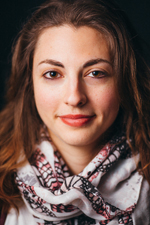 Rocio Acuna-Hidalgo
Rocio Acuna-Hidalgo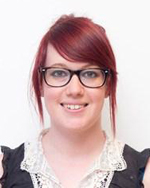 Charlotte Alston
Charlotte Alston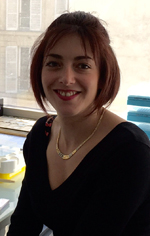 Elodie Bal
Elodie Bal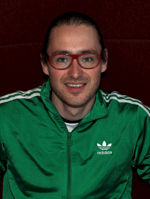 Christian Benner
Christian Benner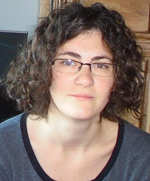 Ange-Line Bruel
Ange-Line Bruel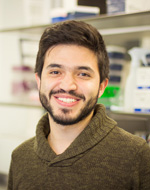 Juan Camilo Chacón-Duque
Juan Camilo Chacón-Duque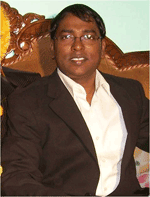 Ganesh Chauhan
Ganesh Chauhan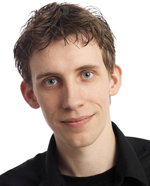 Joep de Ligt
Joep de Ligt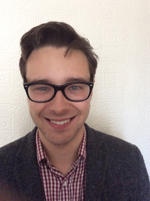 Jack Euesden
Jack Euesden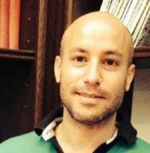 Lucas Fares Taie
Lucas Fares Taie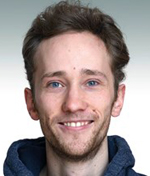 Jakob Goldmann
Jakob Goldmann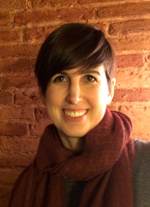 Marta Guindo-Martínez
Marta Guindo-Martínez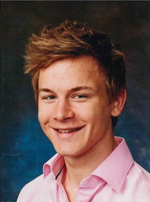 Pyry Helkkula
Pyry Helkkula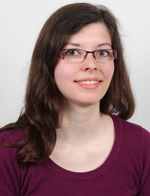 Susanne Jäger
Susanne Jäger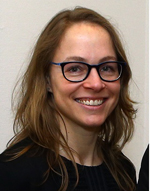 Sandra Jansen
Sandra Jansen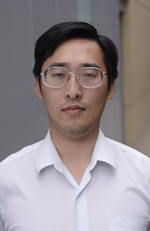 Tao Jiang
Tao Jiang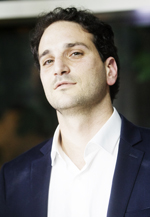 Rotem Kadir
Rotem Kadir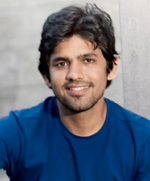 Parveen Kumar
Parveen Kumar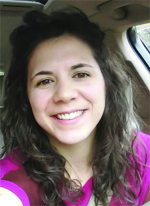 Maeva Langouet
Maeva Langouet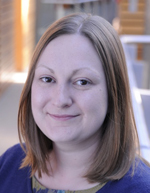 Jenny Lord
Jenny Lord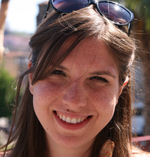 Maria Nicla Loviglio
Maria Nicla Loviglio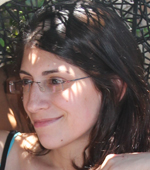 Hagar Mor-Shaked
Hagar Mor-Shaked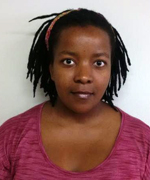 Thandiswa Ngcungcu
Thandiswa Ngcungcu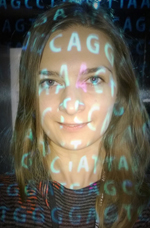 Emilia Niemiec
Emilia Niemiec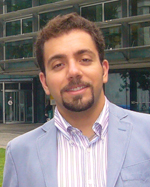 Antonio Pardiñas
Antonio Pardiñas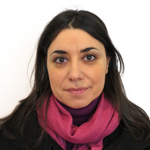 Anna Maria Pinto
Anna Maria Pinto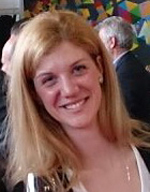 Jelena Pozojevic
Jelena Pozojevic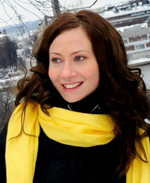 Marjaana Pussila
Marjaana Pussila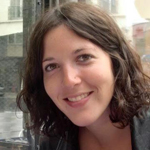 Claire Redin
Claire Redin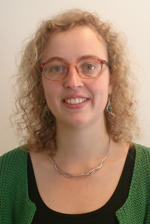 Margot Reijnders
Margot Reijnders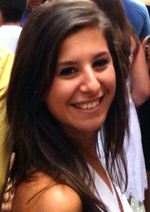 Judith Reina Castillón
Judith Reina Castillón 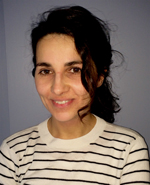 Barbara Rivera
Barbara Rivera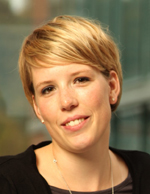 Sina Rüeger
Sina Rüeger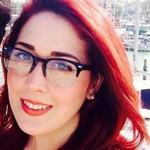 Ambra Sartori
Ambra Sartori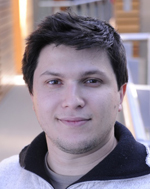 Alejandro Sifrim
Alejandro Sifrim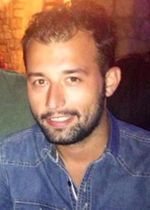 Georgios Stamoulis
Georgios Stamoulis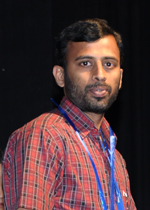 Digumarthi Sudhakar
Digumarthi Sudhakar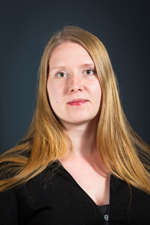 Ida Surakka
Ida Surakka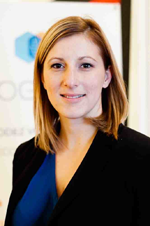 Martine Tetreault
Martine Tetreault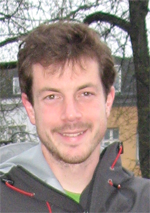 Julien THEVENON
Julien THEVENON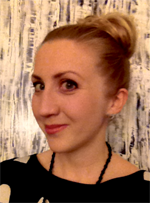 Taru Tukiainen
Taru Tukiainen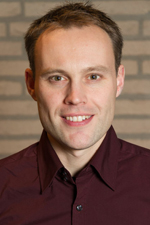 Peter van den Akker
Peter van den Akker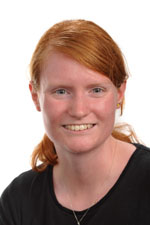 Emma Wade
Emma Wade